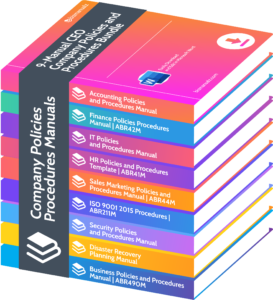COO Optimization Mastering Supply Chain Network Optimization

Are you struggling to streamline your supply chain network and maximize operational efficiency? In today’s fast-paced business world, supply chain optimization is crucial for success. In this article, we will discuss the importance of COO optimization and how it can help you overcome challenges in your supply chain. COO Optimization Mastering Supply Chain Network Optimization.
What is COO Optimization?
COO Optimization is the process of strategically managing and improving the responsibilities and functions of the Chief Operating Officer within a company. This involves streamlining operational processes, increasing efficiency, and promoting seamless coordination between departments.
Through COO Optimization, businesses can achieve greater productivity, cost reductions, and overall performance improvements.
It is important to have a thorough understanding of the organization’s operational landscape and align the COO’s objectives with the company’s strategic goals in order to effectively optimize their role.
Why is COO Optimization Important in Supply Chain Management?
COO optimization is essential in supply chain management as it plays a crucial role in enhancing efficiency, reducing costs, and improving customer satisfaction. By streamlining operations, minimizing lead times, and optimizing inventory levels, COO optimization leads to better resource allocation and increased profitability.
To achieve success in supply chain management, it is crucial to focus on real-time tracking, demand forecasting, and strategic partnerships with suppliers and distributors. The implementation of advanced technologies such as IoT and AI can further elevate COO optimization.
What Factors Affect COO Optimization?
When it comes to COO (Country of Origin) optimization, there are several key factors to consider. These factors can greatly impact the efficiency and cost-effectiveness of a supply chain network.
In this section, we will delve into the three main factors that affect COO optimization: production costs, transportation costs, and inventory costs. By understanding these factors, businesses can make strategic decisions to optimize their supply chain and ultimately improve their bottom line.
1. Production Costs
- Perform a thorough analysis of all expenses related to the production process.
- Identify potential areas for cost optimization, such as sourcing raw materials, improving equipment efficiency, or reducing labor expenses.
- Explore alternative production methods or technologies that may lower overall production costs.
- Implement cost-effective measures while maintaining product quality and adhering to safety standards.
2. Transportation Costs
Transportation costs play a crucial role in COO optimization as they directly impact overall supply chain expenses. By analyzing and optimizing transportation costs, businesses can achieve significant cost savings and improved efficiency.
- Assess current transportation costs to identify areas for improvement.
- Consider alternative transportation modes to reduce costs and improve efficiency.
- Optimize delivery routes to minimize transportation expenses.
- Implement technology for real-time tracking and monitoring of transportation costs.
3. Inventory Costs
- Implement efficient inventory management systems to track inventory levels and reduce inventory costs.
- Utilize demand forecasting to optimize inventory levels and minimize stockouts and associated costs.
- Regularly conduct inventory audits to identify obsolete or slow-moving inventory and take necessary actions to minimize holding costs.
- Optimize order quantities and lead times to minimize holding costs while maintaining appropriate stock levels.
Consider implementing automated inventory management systems and adopting lean inventory practices to streamline inventory processes and reduce inventory costs.
What are the Benefits of COO Optimization?
COO optimization is a critical aspect of supply chain management that can greatly impact a company’s success. By optimizing the network of suppliers, manufacturers, and distributors, businesses can reap numerous benefits.
In this section, we will discuss the top three benefits of COO optimization: cost savings, improved efficiency, and better customer service. By understanding these advantages, companies can see the value in investing in COO optimization to enhance their supply chain operations.
1. Cost Savings
- Utilize lean principles to minimize waste and maximize resource utilization, resulting in cost savings.
- Take advantage of bulk purchasing to receive volume discounts and save on costs.
- Simplify and streamline processes to increase productivity and decrease operational expenses.
- Invest in technology to automate tasks and enhance efficiency, leading to potential cost savings.
2. Improved Efficiency
- Evaluate processes: Assess current operations to identify inefficiencies, like redundant tasks or delays, in order to improve efficiency.
- Streamline workflows: Identify bottlenecks and implement streamlined processes to enhance productivity and improve efficiency.
- Implement technology: Utilize automation and software to improve accuracy and speed of operations, resulting in improved efficiency.
- Optimize resources: Efficiently allocate resources and minimize waste through strategic planning and monitoring, ultimately leading to improved efficiency.
3. Better Customer Service
To improve customer service in COO optimization:
- Implement customer-centric KPIs, ensuring timely delivery and accurate orders.
- Provide flexible delivery options to meet a variety of customer needs.
- Utilize technology for real-time tracking and proactive resolution of issues.
By prioritizing customer service, companies can cultivate loyalty and trust, resulting in lasting relationships and recurring business.
How to Master COO Optimization?
Are you looking to streamline your supply chain network and optimize your COO (Country of Origin) strategy? In this section, we will discuss the key steps to mastering COO optimization. First, we will discuss the importance of analyzing your current supply chain network and identifying areas for improvement.
Then, we will explore how technology and data can greatly enhance your COO optimization efforts. Lastly, we will touch on the benefits of considering alternative suppliers and distribution channels in order to further optimize your supply chain. Let’s dive in and discover how to master COO optimization.
1. Analyze Current Supply Chain Network
- Assess the current structure of the supply chain network, including manufacturing facilities, warehouses, and distribution channels.
- Review the existing transportation routes and modes to identify any inefficiencies or bottlenecks.
- Analyze the current inventory management practices to determine the optimal stocking levels and storage locations.
2. Identify Areas for Improvement
- Conduct a comprehensive evaluation of the existing supply chain network to identify areas for improvement.
- Utilize data analysis to pinpoint areas with high transportation or production costs.
- Assess inventory management to identify potential issues with overstocking or stockouts.
- Solicit feedback from key stakeholders to identify pain points and areas for enhancement.
3. Utilize Technology and Data
- Implement advanced analytics tools to effectively analyze supply chain data.
- Utilize IoT devices for real-time monitoring of inventory and transportation.
- Integrate AI for demand forecasting and predictive analytics.
- Leverage blockchain for transparent and secure supply chain transactions.
- Employ cloud-based solutions for seamless data sharing and collaboration.
Did you know? Companies that utilize technology and data for supply chain optimization can experience a 50% reduction in operational costs.
4. Consider Alternative Suppliers and Distribution Channels
- Evaluate your current suppliers and distribution channels to identify any inefficiencies or limitations.
- Conduct thorough research and analysis on potential alternative suppliers and distribution channels to compare costs, reliability, and geographical coverage.
- Engage in negotiations and establish partnerships with new suppliers or distributors to diversify and optimize your supply chain.
Pro-tip: It is important to regularly reassess your suppliers and distribution channels in order to adapt to market changes and ensure optimal performance.
What are the Challenges of COO Optimization?
COO optimization is a crucial aspect of supply chain management, but it comes with its own set of challenges. In this section, we will discuss the various obstacles that companies face when implementing COO optimization strategies.
These include limited resources, resistance to change, and the complexity of supply chains. By understanding these challenges, we can better prepare ourselves for successful COO optimization.
1. Limited Resources
- Prioritize projects based on their potential impact on COO optimization, utilizing limited resources efficiently.
- Invest in technology to streamline processes, reducing the need for extensive human resources.
- Implement training programs to upskill existing employees, maximizing the potential of limited resources.
2. Resistance to Change
- Educate employees about the benefits of change to alleviate concerns.
- Provide training and resources to support the transition and overcome resistance to change.
- Communicate openly and address doubts to build trust and encourage acceptance of change.
- Encourage feedback to involve employees in the process and address any concerns.
Embracing change can lead to innovation and growth. By fostering an environment of open communication and support, organizations can navigate resistance to change and achieve successful COO optimization.
3. Complex Supply Chains
COO optimization can be a challenge in complex supply chains, as it requires intricate coordination and management across multiple stakeholders and processes.
What are the Best Practices for COO Optimization?
In order to achieve optimal performance in supply chain network optimization, there are several best practices that must be implemented. These practices involve continuous analysis and improvement, collaboration with suppliers and partners, and utilization of data and technology.
By incorporating these strategies, companies can effectively master COO optimization and achieve a competitive advantage in the ever-evolving business landscape. Let’s dive into each of these practices and understand how they contribute to the success of supply chain network optimization.
1. Continuous Analysis and Improvement
- Regular Examination: Continuously assess the supply chain network to identify inefficiencies and areas for enhancement.
- Data Analysis: Utilize data to scrutinize the performance of the current network and pinpoint areas requiring improvement.
- Feedback Implementation: Act on the analysis findings by executing changes to enhance the supply chain network’s effectiveness and continuously improve its performance.
2. Collaboration with Suppliers and Partners
- Establish open communication channels with suppliers and partners to foster collaboration and share insights and challenges.
- Engage in joint planning and decision-making processes to align goals and optimize operations.
- Collaborate on innovation and product development to drive efficiency and meet changing customer demands.
- Regularly review performance metrics and KPIs to ensure mutual success and identify areas for improvement.
3. Utilization of Data and Technology
- Implement advanced analytics to extract insights from supply chain data.
- Integrate IoT devices for real-time tracking and monitoring of inventory and transportation.
- Utilize predictive modeling to forecast demand and optimize inventory levels.
- Leverage cloud-based platforms for seamless collaboration and data sharing with partners.
In the early 2000s, the utilization of data and technology in supply chain management surged with the widespread adoption of RFID technology and the development of sophisticated supply chain management software.
Frequently Asked Questions

What is COO Optimization and why is it important?
COO Optimization, or Supply Chain Network Optimization, is the process of maximizing efficiency and minimizing costs in the supply chain network. It is important because it helps businesses streamline their operations, reduce costs, and improve overall performance.
How does COO Optimization work?
COO Optimization works by using data analysis, mathematical modeling, and algorithms to identify the most efficient and cost-effective supply chain network design. It takes into account factors such as demand, transportation, inventory, and production to create an optimal network design for a business.
What are the benefits of COO Optimization?
COO Optimization offers a variety of benefits, including cost reduction, improved efficiency, increased flexibility, better inventory management, and enhanced customer service. It also allows businesses to identify potential risks and make strategic decisions to mitigate them.
What industries can benefit from COO Optimization?
COO Optimization can benefit a wide range of industries, including manufacturing, retail, healthcare, logistics, and distribution. Any business with a supply chain network can benefit from optimizing their operations through COO Optimization.
How can businesses implement COO Optimization?
Businesses can implement COO Optimization by using specialized software, such as network optimization tools, and working with supply chain experts. They can also conduct regular analyses and evaluations of their supply chain network to identify areas for improvement and implement optimization strategies.
What is the role of data in COO Optimization?
Data plays a crucial role in COO Optimization by providing valuable insights into supply chain network performance, identifying areas for improvement, and helping to make data-driven decisions. Accurate and up-to-date data is essential for successful COO Optimization.

















Leave a Reply